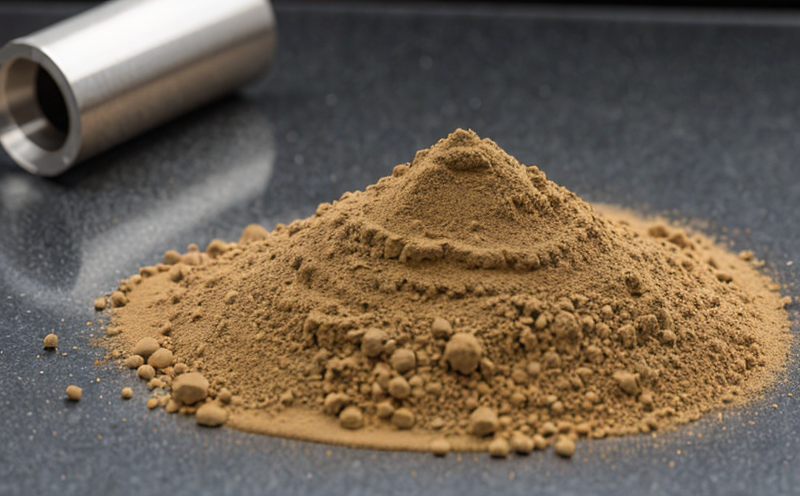ISO 3451 Ash Content Testing in Polymers
The ISO 3451:1976 standard provides a method for determining the ash content of polymers. This is a critical test for quality control and compliance, especially when dealing with materials that may undergo thermal degradation or contain additives like fillers and stabilizers.
Ash content refers to the non-combustible residue left after a sample has been heated to incineration temperature in an oxidizing atmosphere. In polymers, this can include elements such as carbon, hydrogen, nitrogen, oxygen, sulfur, chlorine, and metals that are not part of the polymer structure itself.
The significance of ash content testing lies in its role as an indicator of impurities or contaminants within a material. High ash levels can indicate the presence of unwanted additives or fillers, which may compromise the mechanical properties, thermal stability, and overall quality of the polymer product.
For R&D engineers and quality managers, understanding these nuances is crucial for optimizing production processes and ensuring compliance with international standards.
The ISO 3451 method involves precise sample preparation, heating in a muffle furnace under controlled conditions, and careful weighing of the residue. This process ensures accurate measurement of ash content, which can be used to assess raw material quality or monitor changes during manufacturing.
Proper interpretation of test results is essential for making informed decisions about material selection and process optimization. Compliance officers must ensure that all testing adheres strictly to ISO 3451 guidelines to avoid discrepancies with international standards.
| Step | Description |
|---|---|
| Sample Preparation | Cut the polymer sample into small, uniform pieces and ensure it is dry before testing. |
| Heating | Place samples in a muffle furnace at 850°C for one hour under an oxidizing atmosphere (air). |
| Weighing | Weigh the sample both before and after heating to calculate ash content. |
Compliance with ISO 3451 is particularly important for additive manufacturing, where consistent raw material quality ensures reliable performance of 3D printed parts. This test helps maintain product integrity and meet regulatory requirements in sectors like aerospace, automotive, and medical devices.
For R&D teams, understanding the ash content can provide insights into potential sources of contamination or variability in production processes. For procurement officers, it serves as a tool for evaluating supplier quality and ensuring consistent performance across batches.
Applied Standards
The ISO 3451 standard is widely recognized and used in industries where polymer quality control is paramount. It ensures consistency across laboratories by providing a standardized approach to ash content determination.
While ISO 3451 remains the primary reference, it's important to note that newer standards and guidelines may also apply depending on specific industry needs or regional regulations. For instance, ASTM D2067 provides additional insights into ash content testing for polymers in certain applications.
Scope and Methodology
The scope of ISO 3451:1976 is limited to the determination of ash content in polymers, with particular emphasis on ensuring that tests are conducted under controlled conditions to minimize variability. The methodology described in this standard is designed to provide accurate and reproducible results.
| Aspect | Description |
|---|---|
| Sample Preparation | Carefully cut the polymer into small, uniform pieces. Ensure samples are dry before testing. |
| Heating Conditions | Heat samples in a muffle furnace at 850°C for one hour under an oxidizing atmosphere (air). |
| Weighing Procedure | Weigh the sample both before and after heating to calculate ash content. |
The controlled environment of a muffle furnace is crucial as it ensures that only non-combustible residues remain, providing an accurate measure of ash content. This method also helps in identifying any potential issues with raw materials or manufacturing processes.
It's important to note that while ISO 3451 provides the core methodology, variations may be required based on specific polymer types or applications. For instance, some polymers may require longer heating times or different furnace settings for accurate ash content determination.
Environmental and Sustainability Contributions
- The ISO 3451 method helps in identifying contaminants that could reduce the recyclability of polymer waste. By ensuring high-quality raw materials, manufacturers can extend the lifecycle of polymers used in products.
- Ash content testing also aids in reducing energy consumption during the production process by minimizing the use of impure or contaminated raw materials. This leads to more efficient manufacturing and lower carbon footprints.
The accurate identification of ash content through ISO 3451 ensures that only high-quality polymers are used, which can lead to better product performance and longer service life. Additionally, the standard supports sustainable practices by promoting the use of clean raw materials in additive manufacturing processes.
Incorporating ISO 3451 into quality control procedures helps manufacturers comply with environmental regulations while also contributing to a more sustainable industry ecosystem.





